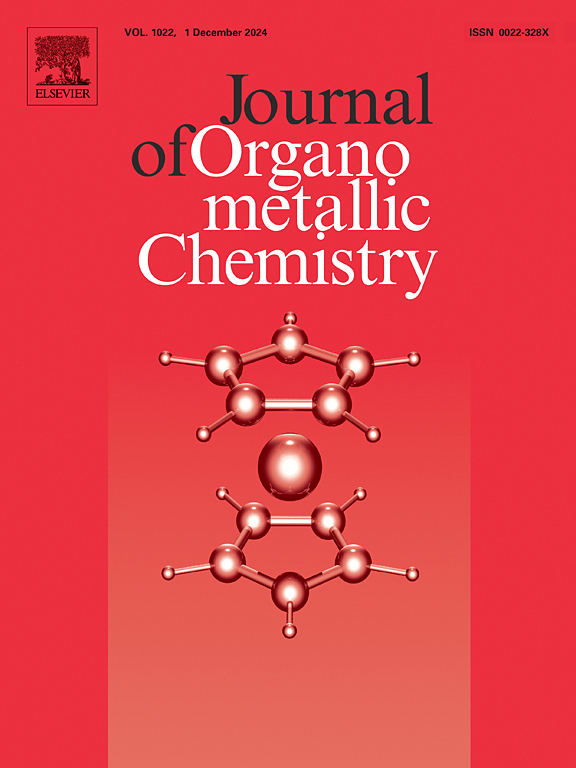The design, synthesis, and antibacterial activity of ferrocene-based long-chain quaternary ammonium salts
IF 2.1
3区 化学
Q3 CHEMISTRY, INORGANIC & NUCLEAR
引用次数: 0
Abstract
The paper described the synthesis a series of novel long-chain quaternary ammonium salts based on ferrocene carboxylic acid. The structures of these salts were characterized through 1H NMR, 13C NMR, HRMS (ESI), and UV–Vis. Their electrochemical behavior was evaluated through cyclic voltammetry, and the surface properties were assessed by measuring surface tension and conductivity. Additionally, the antimicrobial effects of the target molecules were tested against both Gram-positive bacteria (S. aureus) and Gram-negative bacteria (Escherichia coli). The activity results indicated that increasing the length of the alkyl chain in the compounds significantly decreased the critical micelle concentration and greatly enhanced the antimicrobial efficacy. Furthermore, the introduction of ferrocene improved the antibacterial activity of the compounds against S. aureus. Structurally, the Gemini-type compound FcCnNNCnFc, featuring a single-chain FcCnN linked by a hexyl group, exhibited a pronounced decrease in critical micelle concentration and a significant improvement in antimicrobial activity. These ferrocene-containing quaternary ammonium salt compounds proposed showed promising potential alternatives for antimicrobial agents or surfactants used in industrial applications.

二茂铁基长链季铵盐的设计、合成及抗菌活性研究
以二茂铁羧酸为原料合成了一系列新型长链季铵盐。通过1H NMR、13C NMR、HRMS (ESI)和UV-Vis对盐的结构进行了表征。通过循环伏安法评价了它们的电化学行为,并通过测量表面张力和电导率评价了它们的表面性能。此外,还测试了目标分子对革兰氏阳性菌(金黄色葡萄球菌)和革兰氏阴性菌(大肠杆菌)的抗菌作用。活性结果表明,增加化合物中烷基链的长度可显著降低临界胶束浓度,显著提高抗菌效果。此外,二茂铁的引入提高了化合物对金黄色葡萄球菌的抗菌活性。结构上,gemini型化合物FcCnNNCnFc具有单链己基连接的FcCnN,其临界胶束浓度显著降低,抗菌活性显著提高。这些含二茂铁季铵盐化合物在工业应用中具有潜在的抗菌剂或表面活性剂的替代品。
本文章由计算机程序翻译,如有差异,请以英文原文为准。
求助全文
约1分钟内获得全文
求助全文
来源期刊

Journal of Organometallic Chemistry
化学-无机化学与核化学
CiteScore
4.40
自引率
8.70%
发文量
221
审稿时长
36 days
期刊介绍:
The Journal of Organometallic Chemistry targets original papers dealing with theoretical aspects, structural chemistry, synthesis, physical and chemical properties (including reaction mechanisms), and practical applications of organometallic compounds.
Organometallic compounds are defined as compounds that contain metal - carbon bonds. The term metal includes all alkali and alkaline earth metals, all transition metals and the lanthanides and actinides in the Periodic Table. Metalloids including the elements in Group 13 and the heavier members of the Groups 14 - 16 are also included. The term chemistry includes syntheses, characterizations and reaction chemistry of all such compounds. Research reports based on use of organometallic complexes in bioorganometallic chemistry, medicine, material sciences, homogeneous catalysis and energy conversion are also welcome.
The scope of the journal has been enlarged to encompass important research on organometallic complexes in bioorganometallic chemistry and material sciences, and of heavier main group elements in organometallic chemistry. The journal also publishes review articles, short communications and notes.
 求助内容:
求助内容: 应助结果提醒方式:
应助结果提醒方式:


